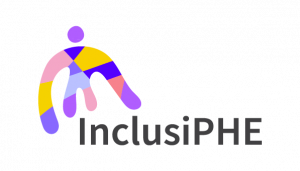Self-Assessment Framework, Guidelines and Action Planning
 Self-assessment framework
Self-assessment framework
The InclusiPHE consortium has developed a framework for self-assessment of inclusive engagement of non-traditional students to conduct baseline surveys of Professional Higher Education Institutions (PHEIs) and student led-organisations, develop benchmarking exercises and monitor their progress. Experts from within the consortium have drawn up the criteria on the basis of best-practice in literature, their own experience and the supplementary evidence provided by other research conducted during this project.
Based on this framework, a PHEI Inclusive-Engagement self-assessment tool and a Student Union (SU) self-assessment tool have been designed and developed.
The SUs self-assessment tool helps students’ unions (and other student-led organisations) to assess to what extent they are following inclusive strategies and practices for student engagement within their own organisation and if so, allows the organisation’s leadership to evaluate in which way and to what extent these strategies are implemented and to develop concrete actions for improvement.
In a similar manner, the PHEI self-assessment tool helps staff and students within (Professional) Higher Education Institutions to assess to what extent PHEIs are following inclusive strategies and practices for student engagement and how these are aligned with their overall institutional strategies. Assessment based on this tool will also allow PHEIs and HEIs to monitor their progress and compare themselves with other institutions.
Guidelines for optimal use of the self-assessment
Furthermore, the Consortium has produced guidelines that will map ways for turning the self-assessment into concrete action plans, advancing a commitment to inclusive engagement both at campus/PHEI and within student-led organisation. Both PHEIs and students’ organisations can use the Guidelines for development of inclusive engagement action plans at student-led organisations, to assist them in creating new policies, as well as to measure progress and celebrate successes.
The Guidelines follow questions to formulate the inclusive engagement practices:
- What gaps do we need to address?
- What challenges do we face?
- What does change look like?
- What are the goals and measurable outcomes?
- How will we know if we are successful? What benchmarks will we use, and how will we document our progress and success?
- What actions will we need to implement to reach our goals and vision?
- How will we operate and learn as an organization?
You can find more information about the self-assessment framework and guidelines here:
From planning to implementation
To identify and implement potential positive changes in regards to inclusion of non-traditional students, follow the categories/steps included in the template provided below, which help PHEIs and students’ organisations to develop their action plan for improving inclusive student engagement through a logical step-by-step process.
The results of the action plan filled in below can help your institution or students’ organisation find inspiration in terms of initiatives to be done for better student participation and inclusion of non-traditional students, while the overall comparison of the results of the self-assessment tool can help you to better understand and map the needs of non-traditional students.

